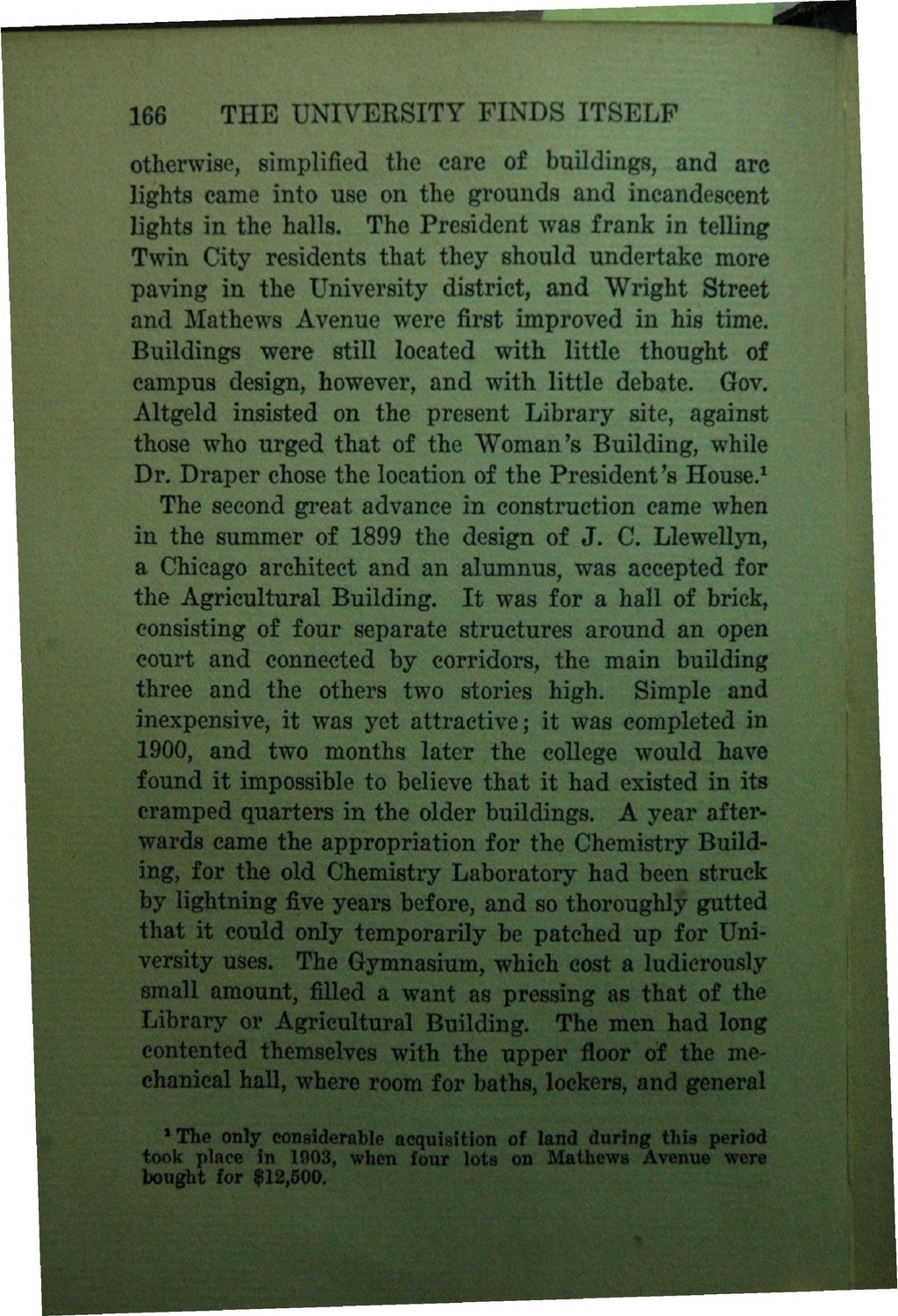| |
| |
Caption: Book - History of the University (Nevins)
This is a reduced-resolution page image for fast online browsing.

EXTRACTED TEXT FROM PAGE:
166 THE UNIVERSITY FINDS ITSELF otherwise, simplified the care of buildings, and are lights came into use on the grounds and incandescent lights in the halls. The President was frank in telling Twin City residents that they should undertake more paving in the University district, and Wright Street and Mathews Avenue were first improved in his time. Buildings were still located with little thought of campus design, however, and with little debate. Gov. Altgeld insisted on the present Library site, against those who urged that of the Woman's Building, while Dr. Draper chose the location of the President's House.1 The second great advance in construction came when in the summer of 1899 the design of J. C. Llewellyn, a Chicago architect and an alumnus, was accepted for the Agricultural Building. It was for a hall of brick, consisting of four separate structures around an open court and connected by corridors, the main building three and the others two stories high. Simple and inexpensive, it was yet attractive; it was completed in 1900, and two months later the college would have found it impossible to believe that it had existed in its cramped quarters in the older buildings. A year afterwards came the appropriation for the Chemistry Building, for the old Chemistry Laboratory had been struck by lightning five years before, and so thoroughly gutted that it could only temporarily be patched up for University uses. The Gymnasium, which cost a ludicrously small amount, filled a want as pressing as that of the Library or Agricultural Building. The men had long contented themselves with the upper floor of the mechanical hall, where room for baths, lockers, and general "The only considerable acquisition of land during this period took place in 1003, when four lots on Mathews Avenue were bought for $12,500.
| |